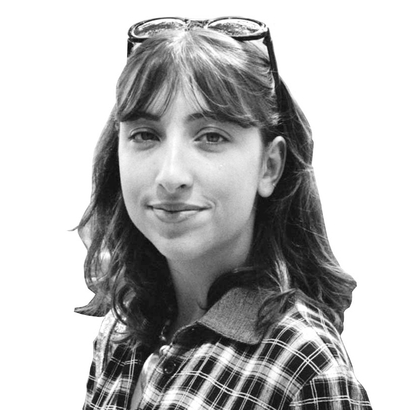Painting lost its cool in Paris a long time ago.
In the 1960s, artists such as Donald Judd, John Baldessari, and Andy Warhol, and galleries like Castelli and Green Gallery, shifted the art world’s epicenter from Paris—whose Salons and Salons des Refusés once ruled the art scene—to New York.
By the turn of the century, young artists in France were having to justify their desire to paint figures. During a 2014 conference at the Collège de France, the artist Thomas Lévy-Lasne noted that when he studied at the Beaux-Arts, the country’s most prestigious fine-arts university, multi-media studies received bigger budgets than painting. “The idea that ‘painting is dead’ still floated in the air,” he said. “It took me a long time to come to terms with my decision to become a painter.”

Yet in recent years, spurred by a resurgence of contemporary painting in the global art market, French schools such as the Beaux-Arts, as well as the country’s museums and galleries, have begun supporting painters again. Today, Paris is in the midst of an artistic boom.

International recognition began in earnest last fall, when The New York Times published a story saying that the city was “experiencing a cultural renaissance, and reclaiming its place on the contemporary art map.”
It cited numerous reasons for this: the increasing number of privately funded art foundations (such as the Fondation Louis Vuitton, an art museum and cultural center opened by LVMH founder Bernard Arnault 10 years ago, and the Bourse de Commerce, which Arnault rival François Pinault, of Kering, transformed into an art museum in 2021), the recent arrival of major international art galleries (Hauser & Wirth, David Zwirner, and Gagosian among them), and Paris’s affordability relative to other art hubs, such as New York and London.

Out of this boom have emerged countless young painters, most notably the nine artists Jean Claracq, Cecilia Granara, Miryam Haddad, Nathanaëlle Herbelin, Simon Martin, Madeleine Roger-Lacan, Christine Safa, Elené Shatberashvili, and Apolonia Sokol—a group of young, ambitious, and promising French artists who all studied at the Beaux-Arts around the time that painting as a medium was making a comeback.
The Nine graduated between 2015 and 2019, and have since found individual success. Claracq had a solo show at the Fondation Louis Vuitton, in Paris, in 2020. Haddad had her work displayed at the Armory Show, in New York, in 2022. Granara showed her work at Cassina Projects, in Milan, last year, and a Nathanaëlle Herbelin exhibition is currently on display at the Musée d’Orsay.

In 2021, Martin’s work joined the collection of the Musée d’Art Moderne de la Ville de Paris, and he had a solo show at the Galerie Peter Kilchmann in Switzerland in 2023. Roger-Lacan, Safa, and Shatberashvili had solo shows at Galerie Eigen + Art in Berlin, Galerie Lelong & Co. in Paris, and gb agency in Paris, respectively, and Sokol was the subject of a documentary and had a solo show at the Arken Museum of Modern Art near Copenhagen that just wrapped. A few of them have sold pieces to Pinault.

There are plenty of other young French painters to watch today, including Pol Taburet, whose work is also featured in the Pinault Collection, and Diane Dal-Pra, whose work is in the Fondation Louis Vuitton, but the Nine have made a particular splash in the city’s burgeoning arts scene.

The young artists entered one another’s lives at the beginning of their studies. “We’ve evolved next to each other,” Roger-Lacan tells me. “Studying at Beaux-Arts changed my life because I found my tribe,” Granara says.
Roger-Lacan says that many of them overlapped during late studio hours. She remembers going into Claracq’s, Herbelin’s, and Sokol’s studios and observing them work.
The Nine quickly became close—and sometimes dated—but they didn’t think to show their work together until the end of their studies, when François Boisrond and Didier Semin, two of their professors, floated the idea. During her senior presentation, Roger-Lacan remembers them telling her, “You should do a show all together when you’re out of school …. There is something special about how you connect.”

So she, Herbelin, and Granara pitched the idea to their friend Anaël Pigeat, a curator, editor at The Art Newspaper, and writer at Paris Match. “We told her we were excited to show the conversations, mirroring, intimacy, and links between each other,” says Granara. “We were impatient to prove to Paris that [figure painting] was fresh and exciting and important.”

Between 2019 and 2022, Pigeat and fellow curator Sophie Vigourous organized two group shows around the Nine, and smaller clusters have gone on to participate in other group shows. (Pigeat prefers not to classify the Nine as a single group. “It’s not a time of movements anymore,” she says.)

Nearly 10 years after first meeting, the Nine have retained their shared intimacy. Some friendships have changed, others have faded, and yet the energy that first motivated them continues to drive them forward. “They admit their emotions and their pleasures, and their desires and demands, on their canvases,” says Pigeat.
“What ties them together,” she adds, “is the life they have shared.”
Jeanne Malle is an Associate Editor at AIR MAIL


